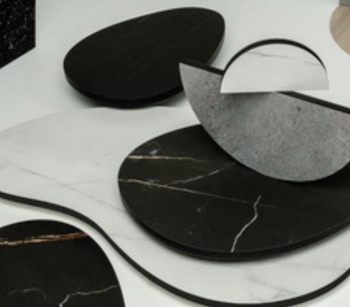Opportunities for underfloor heating as world radiator market cools

|
| World UFH sales dynamics, 2016-2018 (million metres of UFH pipes). |
The global radiator market slowed down in 2018. Figures from BSRIA’s recently-published heating study indicate that sale volumes have dipped by 5% in volume terms over the course of 2018. This decrease was mostly driven by a slowing in Asian countries (China, South Korea). To a lesser extent, Turkey has also contributed towards this general slowing down. There remains a large refurbishment and renovation market for radiators, however in 2018 this remained flat. Forecasts however indicate that this dip is only limited to 2018, and the total radiator market is expected to grow by 2%, up to 2023 per annum in terms of volume.
The global market for Underfloor Heating (UFH) also saw a decline in 2018. However, of the 24 countries covered, only three, China, South Korea and Turkey, saw a drop in the sales of underfloor heating, the other 21 countries covered in the BSRIA study collectively grew at 5.3% in volume terms.
There were a number of reasons for the decline recorded in China, South Korea and Turkey, including country legislation and economy development.
Forecasts indicate that the total market will return to growth as from 2019 and is expected to grow by 2.5% per annum up to 2023. The sales of all related UFH components such as manifolds, controls, insulation sheets and panelling are, of course, closely linked to the amount of UFH piping sold per country.
Unsurprisingly, new multi-dwelling construction accounts for nearly half of all UFH sold worldwide, as opposed to new single dwellings which represent one quarter of sales. Renovation projects, as well as the non-residential sector, will continue to cover a fraction of all UFH pipe sales.
Low-temperature systems such as heat pumps work efficiently with UFH, and the increasing popularity of heat pumps in new build properties in European countries is believed to be a driver for an increasing growth in UFH.
UFH is also considered very appropriate to use with hybrid systems, where a renewable heat source is backed up by a conventional condensing boiler. Also, hybrid installations with a hydronic system in the living areas, and an electric system in the kitchen and bathroom, all managed by a central control, are becoming common. Traditionally a product for new build, underfloor heating systems can now be more easily retrofitted in established properties.
Another trend sees sales of towel warmers and decorative radiators increase. The aesthetics of these products have been a strong selling point for a few years. End users are increasingly looking for products that combine both performance and aesthetics, which has pushed the sales of these segments. Aluminium radiators benefit, too, from the demand for lighter radiators, with faster reaction times.
BSRIA recently published its World Radiator and Underfloor Heating reports, covering 24 countries, spanning across Europe, Asia and North America. The research covers steel, aluminium, cast iron radiators, towel warmers, as well as underfloor heating. Top-line results of components of hydronic systems such as TRVs and thermostats, including programmable and connected ones are also included in these reports.
[edit] About this article
This article was written by Socrates Christidis, Research Manager – Heating & Renewables, BSRIA World Market Intelligence Division. It was previously published on the BSRIA website in September 2019 under the title ‘World radiator market cools, but opportunities for underfloor heating’ and can be accessed HERE.
[edit] Related articles on Designing Buildings Wiki
- Air handling unit.
- Approved documents.
- Building services.
- Building services engineer.
- Building regulations.
- Co-heating test.
- Cold stress.
- Combustion plant.
- Cooling.
- Corrosion in heating and cooling systems.
- Fan coil unit.
- Heat meter.
- Heat metering.
- Heat pump.
- Heat recovery.
- Heat stress.
- Heat transfer.
- Heating large spaces.
- Hot water.
- HVAC.
- Low carbon heating and cooling.
- Mechanical, electrical and plumbing MEP.
- Overheating.
- Pipework.
- Radiant heating.
- Radiator.
- Thermal comfort.
- Thermostat.
- Types of heating system.
- Underfloor heating.
--BSRIA
Featured articles and news
Key points for construction at a glance with industry reactions.
Functionality, visibility and sustainability
The simpler approach to specification.
Architects, architecture, buildings, and inspiration in film
The close ties between makers and the movies, with our long list of suggested viewing.
SELECT three-point plan for action issued to MSPs
Call for Scottish regulation, green skills and recognition of electrotechnical industry as part of a manifesto for Scottish Parliamentary elections.
UCEM becomes the University of the Built Environment
Major milestone in its 106-year history, follows recent merger with London School of Architecture (LSE).
Professional practical experience for Architects in training
The long process to transform the nature of education and professional practical experience in the Architecture profession following recent reports.
A people-first approach to retrofit
Moving away from the destructive paradigm of fabric-first.
International Electrician Day, 10 June 2025
Celebrating the role of electrical engineers from André-Marie Amperè, today and for the future.
New guide for clients launched at Houses of Parliament
'There has never been a more important time for clients to step up and ...ask the right questions'
The impact of recycled slate tiles
Innovation across the decades.
EPC changes for existing buildings
Changes and their context as the new RdSAP methodology comes into use from 15 June.
Skills England publishes Sector skills needs assessments
Priority areas relating to the built environment highlighted and described in brief.
BSRIA HVAC Market Watch - May 2025 Edition
Heat Pump Market Outlook: Policy, Performance & Refrigerant Trends for 2025–2028.
Committing to EDI in construction with CIOB
Built Environment professional bodies deepen commitment to EDI with two new signatories: CIAT and CICES.
Government Grenfell progress report at a glance
Line by line recomendation overview, with links to more details.
An engaging and lively review of his professional life.
Sustainable heating for listed buildings
A problem that needs to be approached intelligently.
50th Golden anniversary ECA Edmundson apprentice award
Deadline for entries has been extended to Friday 27 June, so don't miss out!
CIAT at the London Festival of Architecture
Designing for Everyone: Breaking Barriers in Inclusive Architecture.
Mixed reactions to apprenticeship and skills reform 2025
A 'welcome shift' for some and a 'backwards step' for others.



























